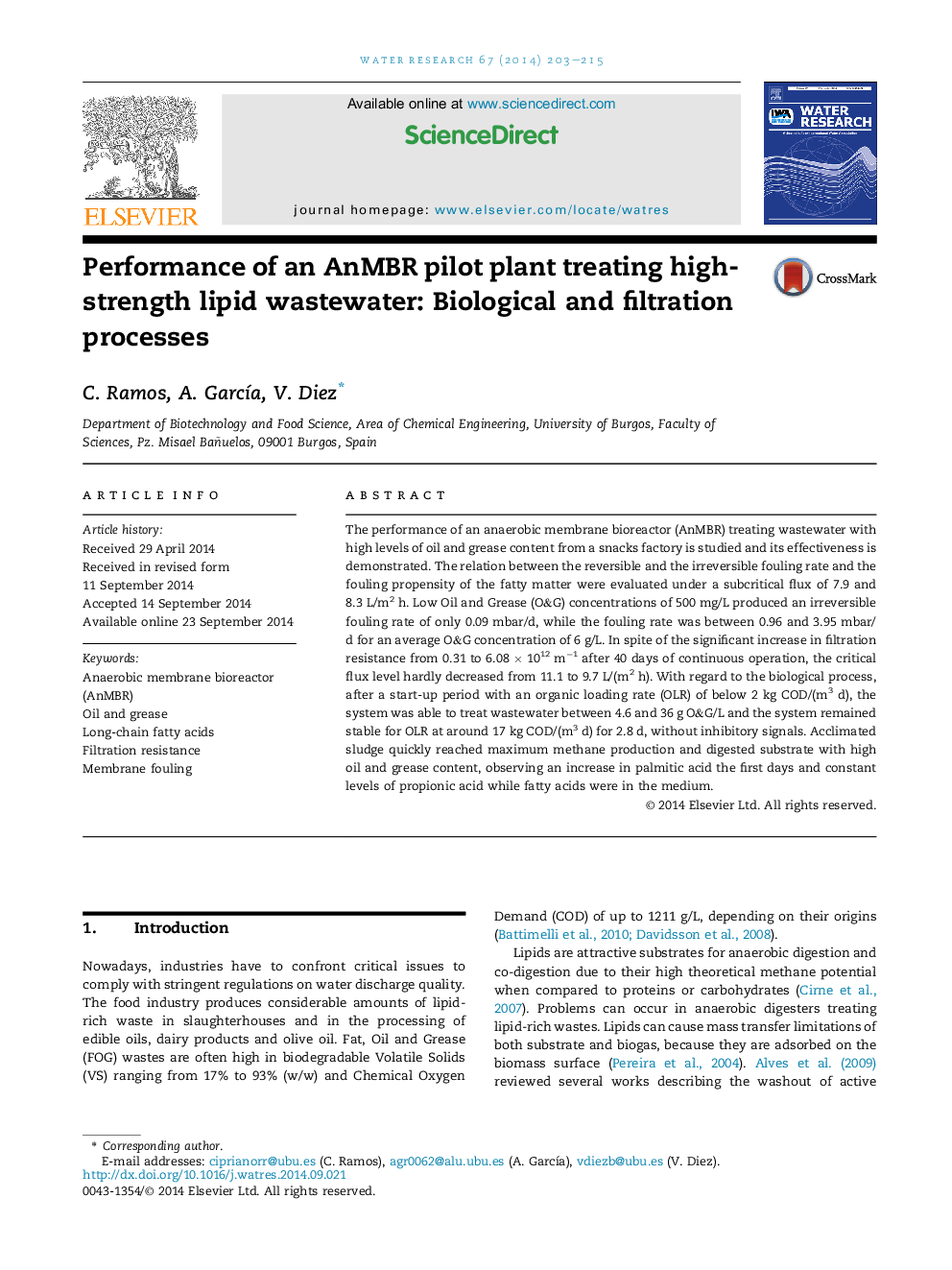| Article ID | Journal | Published Year | Pages | File Type |
|---|---|---|---|---|
| 6366609 | Water Research | 2014 | 13 Pages |
â¢AnMBR technology has proven its effectiveness in the treatment of fatty wastewater.â¢After acclimation O&G degradation rate was nearly threefold higher than before.â¢Reversible and irreversible fouling rates are determined under subcritical conditions.â¢O&G immediately increased the fouling rate, decreasing as biomass was acclimated.
The performance of an anaerobic membrane bioreactor (AnMBR) treating wastewater with high levels of oil and grease content from a snacks factory is studied and its effectiveness is demonstrated. The relation between the reversible and the irreversible fouling rate and the fouling propensity of the fatty matter were evaluated under a subcritical flux of 7.9 and 8.3Â L/m2Â h. Low Oil and Grease (O&G) concentrations of 500Â mg/L produced an irreversible fouling rate of only 0.09Â mbar/d, while the fouling rate was between 0.96 and 3.95Â mbar/d for an average O&G concentration of 6Â g/L. In spite of the significant increase in filtration resistance from 0.31 to 6.08Â ÃÂ 1012Â mâ1 after 40 days of continuous operation, the critical flux level hardly decreased from 11.1 to 9.7Â L/(m2Â h). With regard to the biological process, after a start-up period with an organic loading rate (OLR) of below 2Â kg COD/(m3Â d), the system was able to treat wastewater between 4.6 and 36Â g O&G/L and the system remained stable for OLR at around 17Â kg COD/(m3Â d) for 2.8Â d, without inhibitory signals. Acclimated sludge quickly reached maximum methane production and digested substrate with high oil and grease content, observing an increase in palmitic acid the first days and constant levels of propionic acid while fatty acids were in the medium.
Graphical abstractDownload high-res image (168KB)Download full-size image
